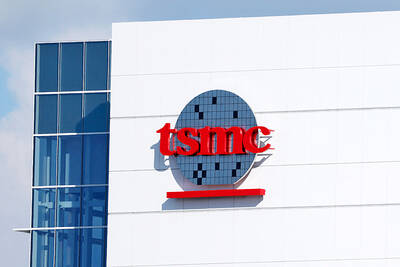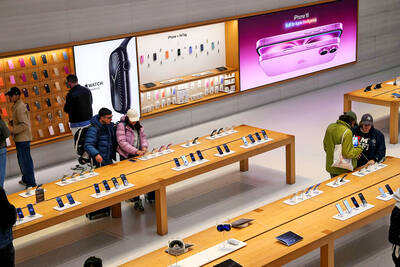Mobile-phone sales in China, the world's biggest wireless market by users, dropped almost a 10th in April because the SARS outbreak sapped demand, a government report released yesterday showed. Motorola Inc lost its leading position to rival Nokia Oyj.
Nokia, Ningbo Bird Co (
The April numbers are the first to reflect the full impact of SARS on China's cell-phone market, which is already suffering because of rising inventory and falling prices.
Motorola, which blamed SARS last week for its decision to cut its full-year profit forecast, sold 24 percent fewer global system for mobile communications, or GSM, phones in April than in March. The US company, the world's second-biggest mobile-phone maker, estimated vendors have 20 million unsold phones in China, almost a third of the country's annual sales.
"The fall in sales because of SARS shouldn't be too big a surprise for the market," said Lily Jap, an analyst at Nomura International (Hong Kong) Ltd. "The key question is how much sellers will allow price cuts to drive sales, especially of phones equipped with colored screens, in the second half."
Sales of GSM-based phones, China's dominant cellular standard, dropped 7.7 percent in April to 6.28 million units, according to the CCID report. By value, they dropped 13 percent to 9.63 billion yuan (US$1.2 billion). That implies the average price of a GSM phone, used by more than 95 percent of China's cell users, dropped 5.8 percent to 1,534 yuan.
TCL Mobile Communication Co, China's No. 2 domestic cell-phone maker, and Konka Group Co are among makers that dropped prices in April. Konka slashed prices of its C869 handset by 37 percent to 1,890 yuan.
Finland-based Nokia, the world's biggest handset maker, increased its share of China's GSM market to 15.3 percent in April from 13.4 percent in the previous month. Schaumburg, Illinois-based Motorola's fell to 14.1 percent from 17.2 percent, the CCID report said.

SEASONAL WEAKNESS: The combined revenue of the top 10 foundries fell 5.4%, but rush orders and China’s subsidies partially offset slowing demand Taiwan Semiconductor Manufacturing Co (TSMC, 台積電) further solidified its dominance in the global wafer foundry business in the first quarter of this year, remaining far ahead of its closest rival, Samsung Electronics Co, TrendForce Corp (集邦科技) said yesterday. TSMC posted US$25.52 billion in sales in the January-to-March period, down 5 percent from the previous quarter, but its market share rose from 67.1 percent the previous quarter to 67.6 percent, TrendForce said in a report. While smartphone-related wafer shipments declined in the first quarter due to seasonal factors, solid demand for artificial intelligence (AI) and high-performance computing (HPC) devices and urgent TV-related orders

BYPASSING CHINA TARIFFS: In the first five months of this year, Foxconn sent US$4.4bn of iPhones to the US from India, compared with US$3.7bn in the whole of last year Nearly all the iPhones exported by Foxconn Technology Group (富士康科技集團) from India went to the US between March and last month, customs data showed, far above last year’s average of 50 percent and a clear sign of Apple Inc’s efforts to bypass high US tariffs imposed on China. The numbers, being reported by Reuters for the first time, show that Apple has realigned its India exports to almost exclusively serve the US market, when previously the devices were more widely distributed to nations including the Netherlands and the Czech Republic. During March to last month, Foxconn, known as Hon Hai Precision Industry

Taiwan Semiconductor Manufacturing Co (TSMC, 台積電) and the University of Tokyo (UTokyo) yesterday announced the launch of the TSMC-UTokyo Lab to promote advanced semiconductor research, education and talent development. The lab is TSMC’s first laboratory collaboration with a university outside Taiwan, the company said in a statement. The lab would leverage “the extensive knowledge, experience, and creativity” of both institutions, the company said. It is located in the Asano Section of UTokyo’s Hongo, Tokyo, campus and would be managed by UTokyo faculty, guided by directors from UTokyo and TSMC, the company said. TSMC began working with UTokyo in 2019, resulting in 21 research projects,

Quanta Computer Inc (廣達) chairman Barry Lam (林百里) yesterday expressed a downbeat view about the prospects of humanoid robots, given high manufacturing costs and a lack of target customers. Despite rising demand and high expectations for humanoid robots, high research-and-development costs and uncertain profitability remain major concerns, Lam told reporters following the company’s annual shareholders’ meeting in Taoyuan. “Since it seems a bit unworthy to use such high-cost robots to do household chores, I believe robots designed for specific purposes would be more valuable and present a better business opportunity,” Lam said Instead of investing in humanoid robots, Quanta has opted to invest